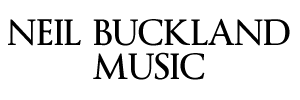In her blog ‘Enchantment and the Courage of Joy: René Magritte on the Antidote to the Banality of Pessimism’, Maria Popova writes:
In a world pocked by cynicism and pummeled by devastating news, to find joy for oneself and spark it in others, to find hope for oneself and spark it in others, is nothing less than a countercultural act of courage and resistance. This is not a matter of denying reality — it is a matter of discovering a parallel reality where joy and hope are equally valid ways of being. To live there is to live enchanted with the underlying wonder of reality, beneath the frightful stories we tell ourselves and are told about it.*
And she quotes Belgian surrealist artist René Magritte (1898–1967), who lost his mother to suicide and lived through two World Wars:
Experience of conflict and a load of suffering has taught me that what matters above all is to celebrate joy for the eyes and the mind. It is much easier to terrorize than to charm… I live in a very unpleasant world because of its routine ugliness. That’s why my painting is a battle, or rather a counter-offensive.
One of the paintings that most clearly illustrates Magritte’s intention to ‘celebrate joy for the eyes and mind’ is Le savoir (‘knowing’ or ‘the knower’ or ‘the knowledge’ – the meaning is ambiguous) : 
Magritte says making art is a ‘battle’ or a ‘counter-offensive’ against terror and ugliness. I would not put it quite that way, but basically my attitude to art is very close if not identical to his: the arts (including music) are at their best and most worthwhile when they bring hope and beauty into the world, or point to the beauty that is there already.
This attitude is not something new. For millennia, all over the world, the arts have brought joy, beauty and meaning into life. That was always their intention and their main purpose.… until the Romantic movement in 19th century Europe began to turn art into a struggle of self-assertion, and 20th century cynicism decided that the only value of the arts was to shock people.
Of course there is great art and music from the 19th and 20th centuries. But the greatest art, from those periods or any other, is never egotistic or cynical: the greatest and most worthwhile art is art that reminds us that we are not engaged in a constant battle against each other and nature but are part of nature and part of humankind**, art that reminds us there is beauty, hope and meaning in life despite all the horror and destruction – art that frees us from the darkness of the mental traps or cages we are caught in. Freeing ourselves from our mental cages is healing, hence the title of this 1937 symbolic painting by Magritte, Le thérapeute, The Therapist or Healer:

I believe it’s important to create art that counter-balances ‘the frightful stories we tell ourselves and are told’ – even when those stories are true. The arts don’t have to be expressions of ego, or disillusionment, or cynicism, or the left-brain delusion that life is meaningless; neither is the role of the arts to show or reflect the bleakness, ugliness and destruction that are undeniably around us in the world (we can rely on the media to do that). The role of the arts is to provide a counter-balance to all this. Our brains have a built-in negativity bias – our attention is automatically attracted more readily to bad news than good, to the negative aspects of reality rather than the positive – and the arts are one of the best ways to counteract this.
To restore the balance, though, the arts don’t have to engage in what Magritte calls a ‘counter-offensive’, they can simply create an alternative: as Maria Popova says, ‘a parallel reality where joy and hope are equally valid ways of being’. A ‘parallel reality’ sounds like a separate reality, but in truth what the arts ideally bring our attention to is another part or another side of the same reality, the side that the stories we are told and our negativity bias distract us from.
We all urgently need something more life-enhancing than the daily grind and the daily news to give our time and attention to: this is where the arts come in. In making my art, which is music, I don’t aim or claim to be ‘enchanting’ anyone, but I do hope to help open at least a few minds, for at least a few moments, to at least a small aspect of the beauty and meaning that are always there amidst the ‘routine ugliness’ of life.
Neil Buckland
*The full blog is at https://www.themarginalian.org/2023/05/31/rene-magritte-enchantment/
**Humankind is also the title of an extremely encouraging and hopeful book by Rutger Bregman that I recommend highly: https://en.wikipedia.org/wiki/Humankind:_A_Hopeful_History

Leave A Comment